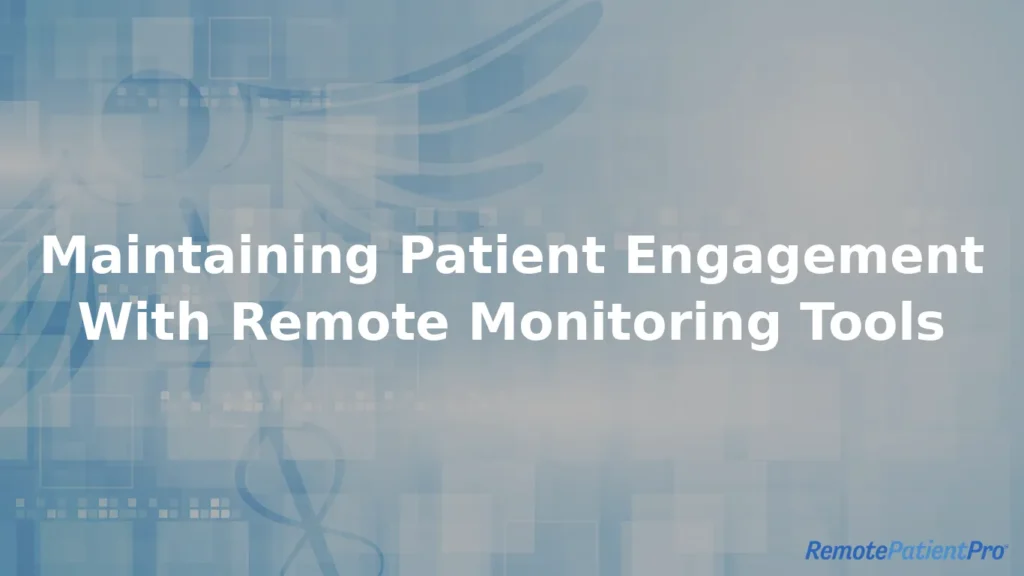Maintaining Patient Engagement With Remote Monitoring Tools
Remote patient monitoring (RPM) has transformed healthcare by enabling real-time tracking of patient vitals that can offer proactive interventions and improved chronic disease management. However, it’s also important that patients who use these devices understand them well enough to apply them correctly. Maintaining patient engagement with remote monitoring tools doesn’t have to be a difficult process, but it is essential for obtaining accurate symptom data that prevents readmissions and negative health outcomes.
When patients buy into the RPM process, healthcare providers see maximum benefits.
Why Patient Engagement Is Crucial to RPM
- Improved health outcomes – When patients see the value in RPM, devices are better maintained and accurately reflect key health indicators that influence treatment plans.
- Reduced hospitalizations – Patients who are actively involved in their own home health monitoring are less likely to experience unnecessary ER visits.
- Stronger provider-patient relationships – Patients who trust in RPM will be more prone to communicate with their providers.
- Greater Monitoring Effectiveness – Accurate data allows providers to detect worsening conditions and intervene early.
Strategies to Maintain Patient Engagement With RPM
Provide Clear Patient Education
Many patients are unfamiliar with digital health tools and may feel overwhelmed by RPM technology. Providing easy-to-understand instructions, video tutorials, and one-on-one training helps patients feel comfortable using monitoring devices.
Use User-Friendly Devices and Mobile Apps
Selecting intuitive RPM devices and mobile-friendly apps increases the likelihood that patients will use them. Features like real-time alerts and easy-to-read dashboards encourage this adoption.
Personalize Patient Communication
Engagement improves when healthcare providers tailor their communication based on their patients’ preferences. Best practices include:
- SMS reminders for RPM check-ins and medication adherence.
- Telehealth follow-ups to review patient progress.
- Personalized health insights based on RPM data trends.
Encourage Family and Caregiver Involvement
Involving family members and/or caregivers can enhance patient accountability and provide additional support. Caregivers can remind patients to use their devices, review results, and communicate concerns with providers.
Provide Ongoing Support and Troubleshooting
Patients are more likely to stay engaged with RPM when they have 24/7 access to technical support and resources. Health centers should partner with RPM vendors that can:
- Provide support with device setup and troubleshooting.
- Check in via phone, text, or telehealth to address patient concerns.
- Offer ongoing patient education.
How RemotePatientPro™ Gets Results
Our turnkey remote patient monitoring solution is designed to keep patients actively involved in their own health by offering:
- User-friendly, automated RPM devices for easy tracking of vital signs.
- Personalized patient alerts and notifications to encourage use.
- Seamless integration with telehealth and EHR systems for coordinated care.
- Mobile-friendly patient dashboards to enhance engagement and self-management.
The Impact of Patient Engagement in RPM
By implementing effective engagement strategies, healthcare providers can:
- Increase patient compliance with RPM protocols.
- Improve chronic disease management and long-term health outcomes.
- Enhance patient satisfaction and provider relationships.
Improve Patient Engagement With RPM Today
Engaging patients in remote monitoring programs is key to ensuring consistent usage, better health outcomes, and long-term success.
Looking for an RPM solution that prioritizes patient engagement? Schedule a demo with us!

